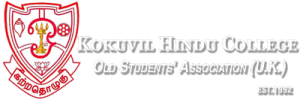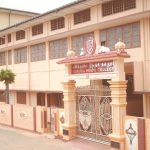HISTORICAL BACKGROUND
The colonial Government handed over the monopoly of education in Sri Lanka (then Ceylon) to anglicized clergy-the three Protestant Christian missions: The Anglican mission, The American mission, the Wesleyan mission-and gave them financial assistance because its definitive policy was to convert the people of Ceylon to Christianity through education. But Catholics, Buddhists, Hindus and Muslims were left out. Christopher Bonjean, a French missionary who was Bishop of Jaffna and later Bishop of Colombo, headed the agitation and strongly advocated a school system which permitted each religious denomination to open and conduct schools for it children with financial aid from the state.
So in 1865, a committee was appointed by the legislative council to enquire into and report on education. On a recommendation by this committee, the Govt. abolished the Protestant dominated Central School Commission set up in 1841 and, in its place, established in 1869, the Department of Public Instruction, which now exists as the Dept. of Education. The committee also laid down two principles regarding Education in the country:
1.that every religious denomination could open schools for its children
2.that Government Grants would be given impartially to all such schools that provided a sound secular education.
These principles formed the basis of the Denominational school system, which came into being and has been known also as the Grants-in-aid System or assisted School system. Kokuvil Hindu College was one of the many schools that came under this system; this is confirmed by the following extract taken from the Jaffna Hindu College magazine (vol. 11) of March 1912 No.1.
Kokuvil Hindu English School Mr.E.Chelliah, the Head master of the Primary Department of Jaffna Hindu College, has taken in-charge of this school as its permanent Head master. The school is gaining popularity and strength under the able supervision of Mr.Chelliah. The manager has applied to the Dept. of Public Instruction for its registration as a Grant-in-aid institution.
This system of education developed extensively in the country and lasted nearly a century until the State take-over of schools in 1960. Thus, the state on the one hand and the religious denomination on the other became partners in education.
Here we must remember with gratitude two great man of Jaffna: Mr.S.Rajaratnam (of Hindu Board) and Srila Sri Arumuga Navalar, who were largely responsible in providing Hindu children with education in a Hindu back-ground. Quite early in life, Navlar selected service to language and religion as his mission in life. He established several Tamil schools. That most of these schools are still functioning is a tribute to the hard work and tenacity of purpose of Navlar, who is the Father of Tamil Prose.
During the last fifty years vast changes in the educational set-up in Sri Lanka have taken place. In 1945 free education was ushered in; tuition fees were abolished from October of that year. The switchover to swabhasha, Shinhala or Tamil, as the medium of instruction took place in 1947. University entrance examinations were held in swabhasha from the year 1959. A transition from denominational institution to Director management was effected in December 1960; vesting of the school in the Government was made effective from 1963 and the Primary school was separated from the collegiate section in 1967. Kokuvil Hindu College was involved in every one of these changes. The school continued to produce excellent results both academically and in extra curricular activities, not withstanding the changes.
In the nineteen thirties the new trend in educational theory was towards the development of self activity in the chill There was a marked reversal of this trend with private-tutor assisted exam-orientation. This was largely the result of fear, on the part of parents and students alike, of failure to secure suitable employment, in an environment of minimal opportunities in relation to numbers of aspirants, fierce competition and deficiencies of education in schools. The scarcity of resources such as school buildings, teachers, laboratories and libraries continued to perpetuate inequalities in education. Primary concern of the students was with education for life not education for livelihood; but he was realist enough and human enough to know that the latter could not be neglected without frustration of the former.
Prior to 1945, higher education, which was in English, was the prerogative of the rich. University education was beyond the reach of even those with an average income. The poor had to be satisfied, at most, with secondary education. Free education from the kindergarten to the University, then called Peal of Great Price opened wide the doors of higher education for the poor. Scholarships from the 5th standard to the University, providing free board and lodging were endowed to poor helpless talented children, selected by a competitive examination. But unplanned education has created unemployment among the educated. Disparity in educational opportunity gave rise to terrorism and many other social evils.
Swabhasha and free education were fine in themselves and a great boon to the non-English speaking and the poor. Discontinuance of literature and history from the school curriculum had a devastating effect on the growth of human sympathy and understanding and allegiance to democracy and justice among the young. Neglect of the humanities was causing catastrophic spiritual impoverishment at all levels.

